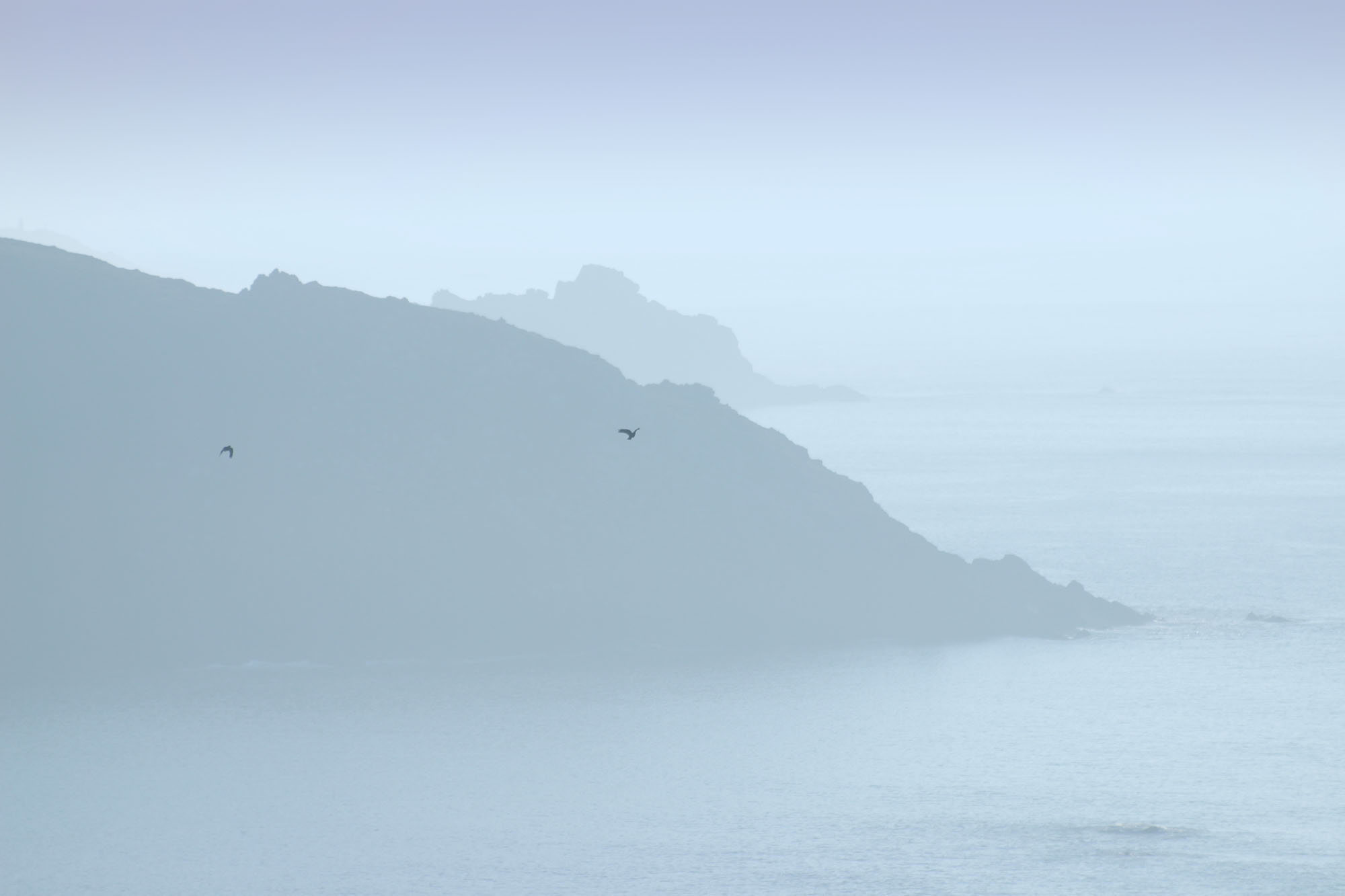The last true Cornish chough died in 1973, leaving the county devoid of its ‘national’ bird. Over the next few years, occasional choughs would be reported, blown in by storms from Brittany or Wales. One pair was observed by Richard Meyer in Rame, near Plymouth, from November 1986 until January 1987. The birds did not form a permanent attachment, and when they left, Cornwall was once again without choughs.
Then in 2001 a small group of three to five choughs arrived in Cornwall, surprising and delighting birdwatchers throughout the county. Three of the birds took up residence on The Lizard, the UK’s most southerly point, and looked set to stay.
It was at this time that foot and mouth disease took hold of the country, and all access to the countryside was immediately restricted. This made it almost impossible to observe the incomers, but also allowed the choughs explore without undue harassment. Two of the birds formed a pair.
History was made in 2002 when this pair nested and produced three young. These were the first choughs to be hatched in the wild in Cornwall in over 50 years, much to the delight of all.
The Cornwall Chough Project
In response to this event, three organisations, the RSPB, English Nature (Natural England), and the National Trust, formed the Cornwall Chough Project. A look-out and 24 hour surveillance of the nest site was organised to protect the choughs from any unwanted attention during the breeding season.
Most of the watches were undertaken by local volunteers giving their time to support the choughs, including staff from Paradise Park where Operation Chough is based. Information was regularly exchanged between the Cornwall Chough Project and Operation Chough.
Breeding records of Red-billed Choughs living wild in Cornwall
These figures show the numbers of successful nests producing chicks. The numbers of pairs of birds attempting to breed may be much larger, but more difficult to accurately measure (for example 2021 there were a total of 41 pairs in the county, but only 23 successful nests were recorded).
- 2001 – 3 – 5 choughs return to Cornwall
- 2002 – 3 chicks from 1 nest
- 2003 – 3 chicks from 1 nest
- 2004 – 4 chicks from 1 nest
- 2005 – 5 chicks from 1 nest
- 2006 – 8 chicks from 2 nests
- 2007 – 9 chicks from 2 nests
- 2008 – 6 chicks from 2 nests
- 2009 – 6 chicks from 2 nests
- 2010 – 9 chicks from 3 nests
- 2011 – 15 chicks from 4 nests
- 2012 – 18 chicks from 5 nests
- 2013 – 13 chicks from 5 nests
- 2014 – 17 chicks from 5 nests
- 2015 – 13 chicks from 8 nests
- 2016 – 23 chicks from 10 nests
- 2017 – 14 chicks from 6 nests
- 2018 – 28 chicks from 10 nests
- 2019 – 33 chicks from 9 nests
- 2020 – 43 chicks from 14 nests
- 2021 – 66 chicks from 23 nests
- 2022 – 71 chicks from 25 nests
- 2023 – 112 chicks from 39 nests
- 2024 – 114 chicks from 42 nests
- 2025 – 129 chicks from 48 nests
Between 2007 and 2014, there were a “pair” of male birds which showed all the signs of a bonded mixed sex pair, i.e. holding a territory and building a nest – even recorded mating (seen by Ray Hales). In 2015 one of these males paired with a female who had lost her partner.
The founding pair of birds on The Lizard raised 46 chicks in total. Sadly, both birds perished in 2013 but they left behind a wonderful red-legacy for the county of Cornwall.
The Cornwall Chough Project has now become The Cornish Chough Conservation Network, and continues to organise the monitoring of the choughs nests each spring. It is also actively involved in encouraging local farmers to develop chough-friendly habitat management.
There is also the ongoing record-keeping of Cornwall Birds (Cornwall Birdwatching & Preservation Society), who do an excellent job of maintining a database of chough sightings in the county. These sightings can be reported via the Contact Page.
At the present time, the future of the chough in Cornwall is very much a cliff-hanger! Although there is an expansion of nesting pairs, many of these are related as the population is the result of breeding from just three founders.
Operation Chough will continue to celebrate the fledgling local population and monitor its progress. It will make captive bred birds available for release in Cornwall to secure the future of the current population, if necessary for demographic or genetic reasons, and will also pursue its further objectives:
- Increase the captive population by extending our partnerships with bird collections, and establish captive breeding groups in several locations.
- Investigate previous historic sites outside of Cornwall to identify where chough could be re-established.
- Make birds available for release elsewhere where this will support further colonisation.
- Promote work on chough genetics.



